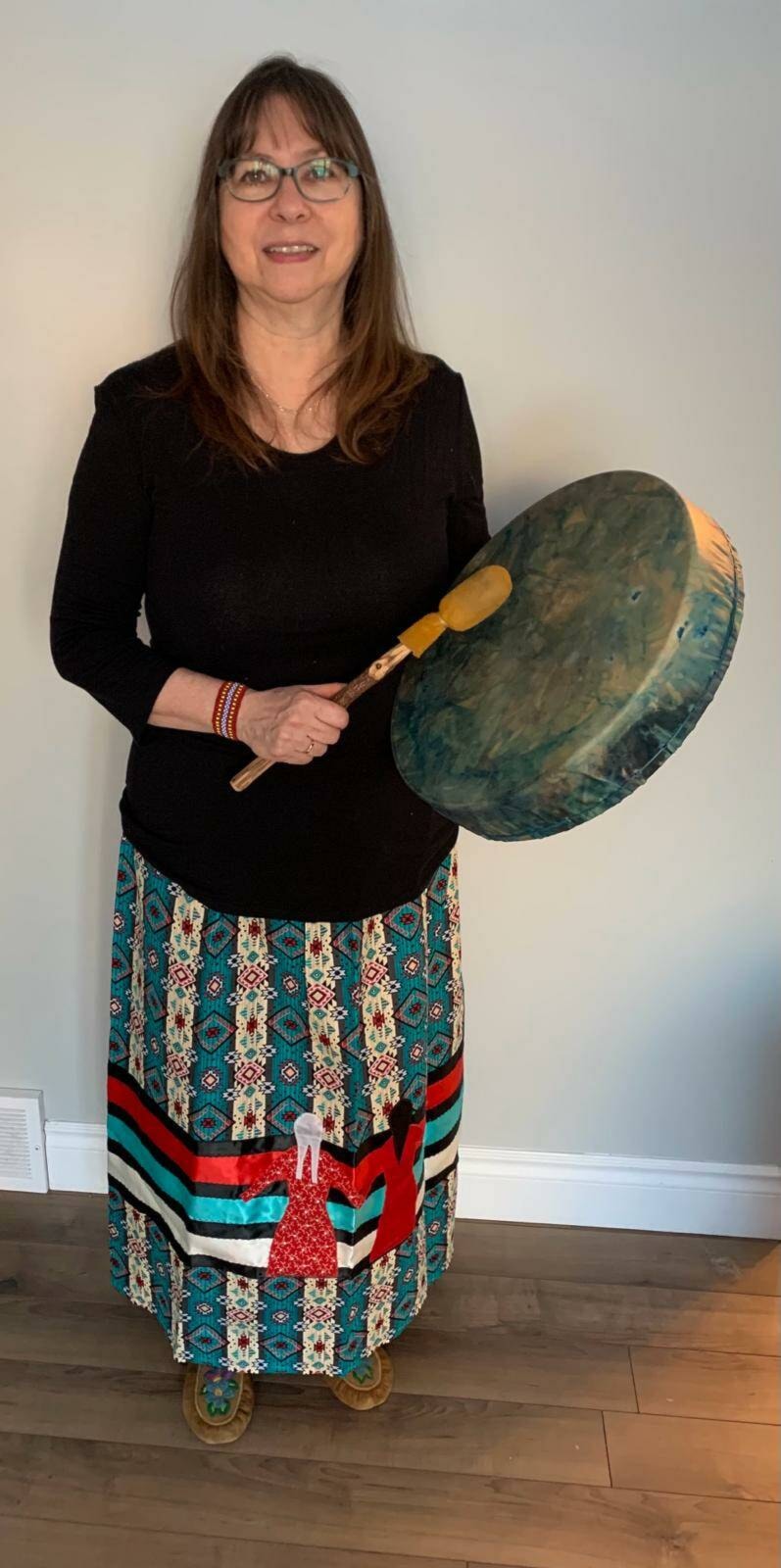Former nurse practitioner Julie Lys is officially retired, but she still spends much of her time helping people heal, thanks to her part-time role as the NWT Métis Nation’s (NWTMN) Healing and Wellness Program coordinator.
“The majority of work that we’ve done so far is with women,” the Fort Smith resident said from Costa Rica, where she has spent part of the winter with her husband. “We’ve been recently trying to increase men’s presence and programs, but for the most part it’s been women, and we find a lot of times when women start to heal, so do their families.”
Lys, who is Métis, joined the NWTMN in 2016, driven by “a desire to do healing and wellness from an Indigenous perspective.”
“I tried to bring a lot of that into my practice as nurse practitioner, but I really realized it was two different systems,” said the mother of two and grandmother of three. “When I retired I approached the Métis Nation.
“I approached Ursula [Vogt], the executive director, and asked her if she could put a call out there to see what money was available for healing and wellness, and that’s how I started.”
Lys admits her programming “started really small,” but in the years since, she and her colleagues have helped deliver a number of important programs for people across the territory, many of which are directed at women.
That includes popular monthly full moon ceremonies, as well as on-the-land fasting ceremonies.
“We have a full moon ceremony every month,” she said. “It’s a woman’s ceremony where we gather on a full moon, and we gather around a fire. We usually start the ceremony at sunset. The fire is started by a man, and then they leave, and then the women gather and we just share our stories. We share teachings, and it’s just a time for women to gather and give each other strength and fellowship.
“One other powerful thing we did is we had fasting ceremonies,” she added. “It wasn’t just for women, but it was all women [who participated]. Every year we would go out on the land for four days with our Elder Aline LaFlamme, and we would fast. That’s the time that we spend for ourselves, to look at our own life experiences and do some healing.”
‘Greatest compliment’
Practices like full moon ceremonies and fasting “were almost lost through colonization and the history of residential schools,” according to Lys.
“Before colonization and before the churches arrived in the North, we had our own ways of healing and our own ways of being. Reviving part of those ceremonies and those ways of being, those ways of gathering and looking after ourselves and each other is what we’re trying to do with the healing programs.
“We are working hard to kind of revive that with the Elders that come forward to work with us, just to give us our own strength and let us stand in our own power as Indigenous women. Our Elders tell us when one generation heals, it heals the seven generations before us and the seven generations after us — it changes the way they are.”
While Lys is motivated by a desire to help other Indigenous women heal, she said she derives immense personal satisfaction from her work, and is often moved by the feedback she receives from the people who participate in her programming.
“I had the greatest compliment when one young woman came to me and said, ‘Whatever you did with my mom, that’s what I want you to do with me,’” she recalled. “I’m like, ‘Your mom did her own work. I helped her, but she did her own work, and you can too.’ But she just saw such a change in her mom that she wanted to be like that.
“When I see the change in people, it’s hard to even put it in words,” she added. “To do the work and to lead people this way, I had to do my own healing work. I participated in all the ceremonies and fasting and did my own work, because you can’t really take people where you haven’t been yourself.”
Like many women across the NWT and Canada, Lys is looking forward to International Women’s Day, which falls on March 8 each year. She called the day “a time for us to celebrate our strengths and our accomplishments and recognize each other and think about who inspired us.”
When asked about her sources of inspiration, she was quick to credit her mother and older sisters.
“My mother was just a wonderful, kind person,” she said. “She was kind to everybody and gave everybody a second chance and no matter how hard things were for people, she could see the good in everybody.
“My older sisters were very inspiring too,” she added. “One sister had a master’s in social work in 1973. As an Indigenous woman, that was unheard of. My other sister was a teacher, and they just led the way. When we sit and talk about it now, all the struggles we had as Indigenous women working in a western model of society and trying to speak up and find our way, it wasn’t easy. It wasn’t easy for any of us, but somehow we made it through.”
